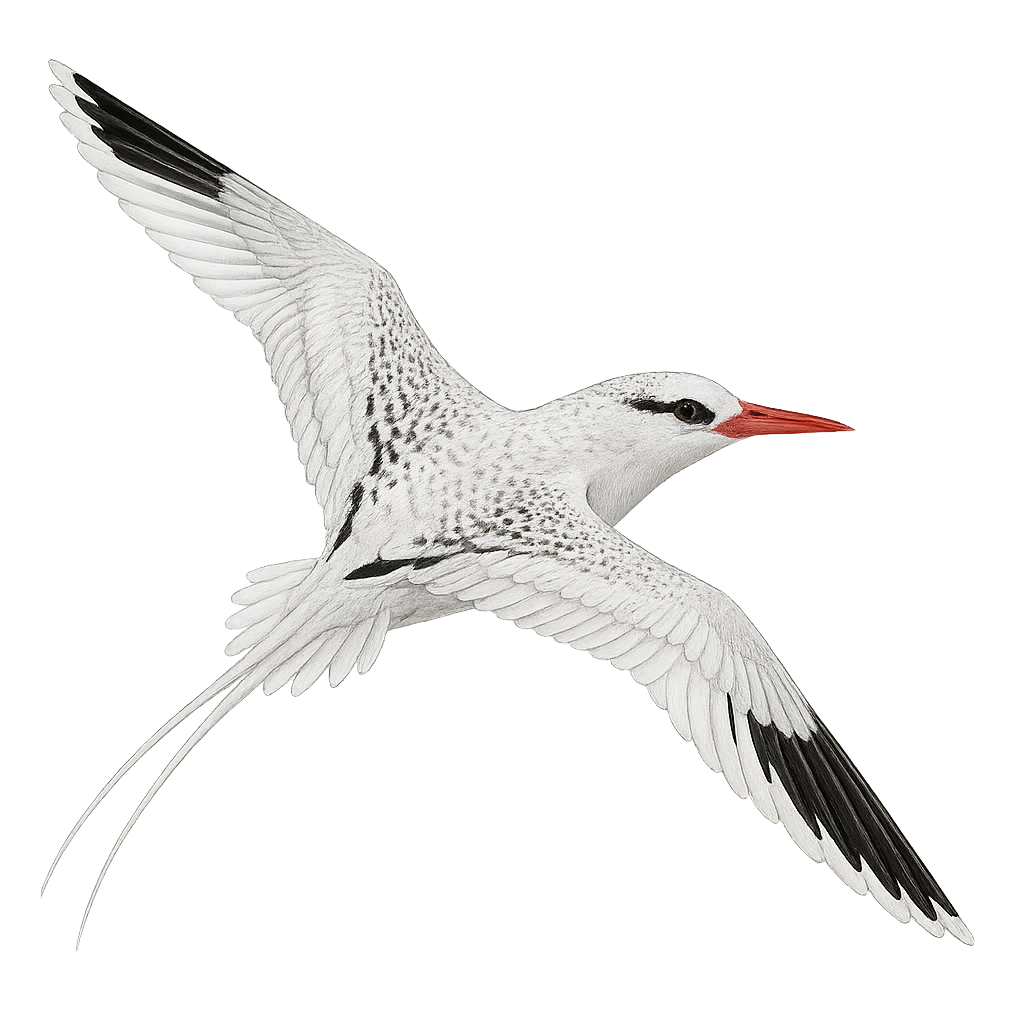Your wildlife photography guide.
Explore the red-billed tropicbird in detail, study its behavior, prepare your shots.
Where to observe and photograph the red-billed tropicbird in the wild
Learn where and when to spot the red-billed tropicbird in the wild, how to identify the species based on distinctive features, and what natural environments it inhabits. The WildlifePhotographer app offers tailored photography tips that reflect the red-billed tropicbird’s behavior, helping you capture better wildlife images. Explore the full species profile for key information including description, habitat, active periods, and approach techniques.
Red-billed Tropicbird
Scientific name: Phaethon aethereus

IUCN Status: Least Concern
Family: PHAETHONTIDAE
Group: Birds
Sensitivity to human approach: Suspicious
Minimum approach distance: 10 m
Courtship display: February to March
Incubation: 42-46 jours
Hatchings: March to May
Habitat:
Cliffs, isolated islands, tropical oceans
Activity period :
Primarily active during the day, with peak activity in the morning and late afternoon.
Identification and description:
The Red-billed Tropicbird is an elegant seabird, easily identifiable by its striking white plumage, long tail feathers, and vivid red bill. It primarily inhabits tropical and subtropical regions of the Atlantic Ocean, the Red Sea, and the Pacific Ocean. This bird spends most of its time at sea, returning to land only to nest on steep cliffs or isolated islands. It feeds mainly on fish and squid, which it catches by skillfully diving. Although generally solitary, it can be seen in small groups during the breeding season. Its population is stable, but it is vulnerable to human disturbances and introduced predators at its nesting sites.
Recommended lens:
400 mm – adjust based on distance, desired framing (portrait or habitat), and approach conditions.
Photography tips:
To photograph the Red-billed Tropicbird, focus on nesting sites on cliffs where they are more accessible. Use a telephoto lens of 400mm or more to capture details without disturbing them. The best times to observe them are early morning or late afternoon when the light is soft. Be discreet and avoid sudden movements to prevent scaring them. If possible, use a tripod to stabilize your camera and achieve sharp images.
The WildlifePhotographer App is coming soon!
Be the first to explore the best nature spots, track rutting seasons, log your observations, and observe more wildlife.
Already 1 439 wildlife lovers subscribed worldwide

